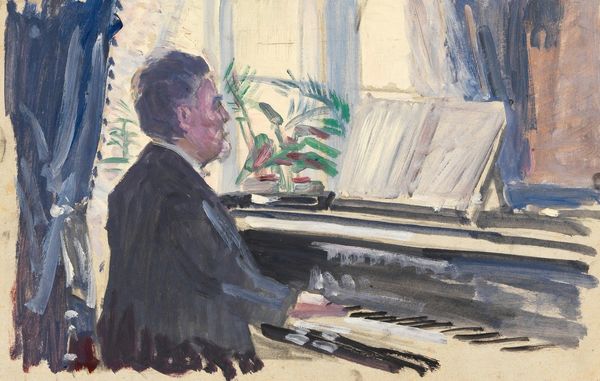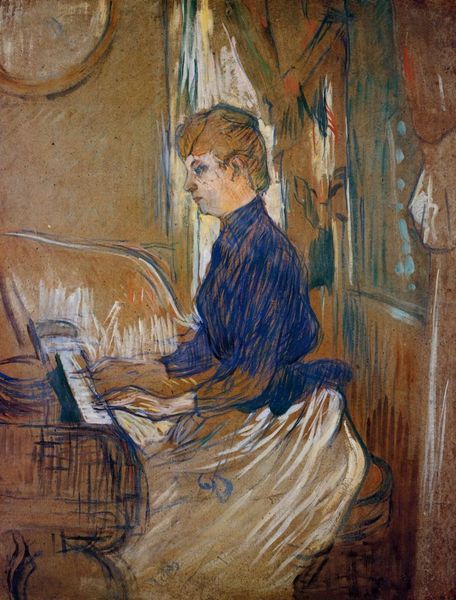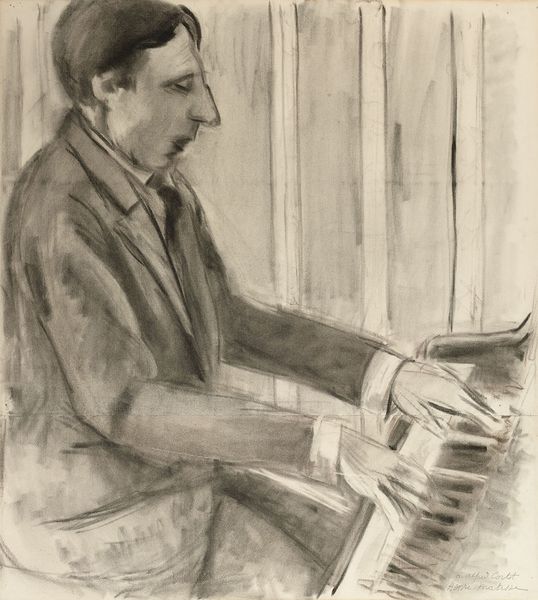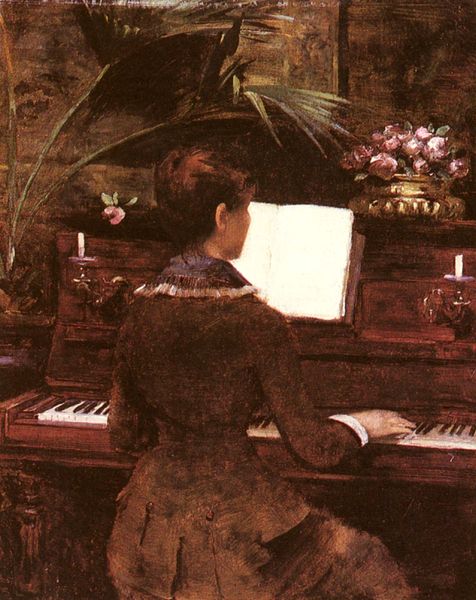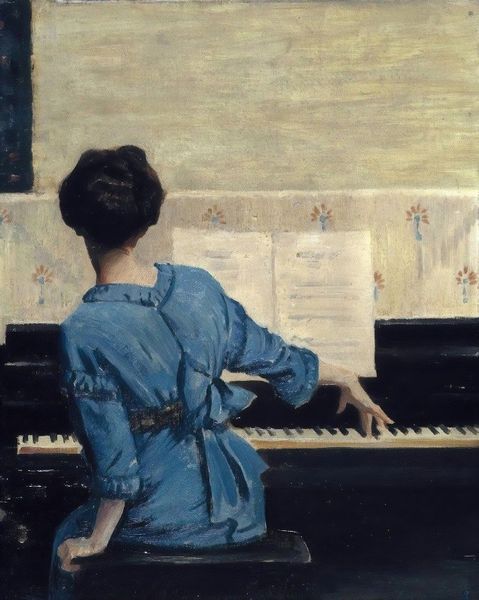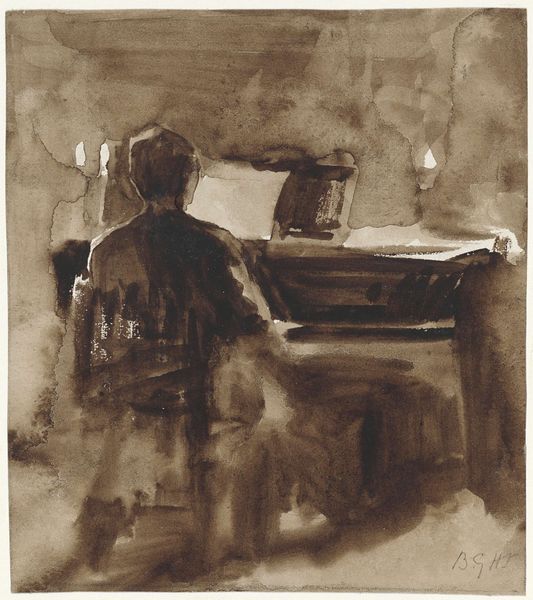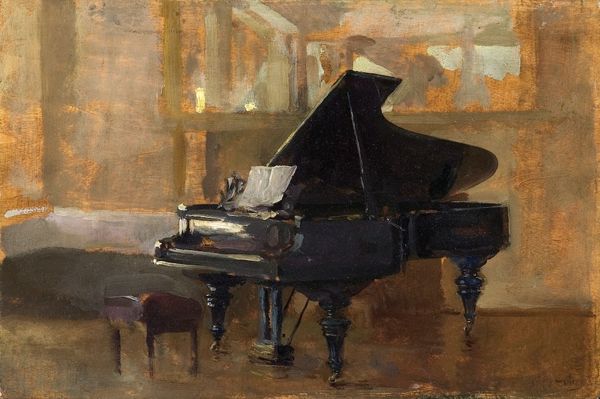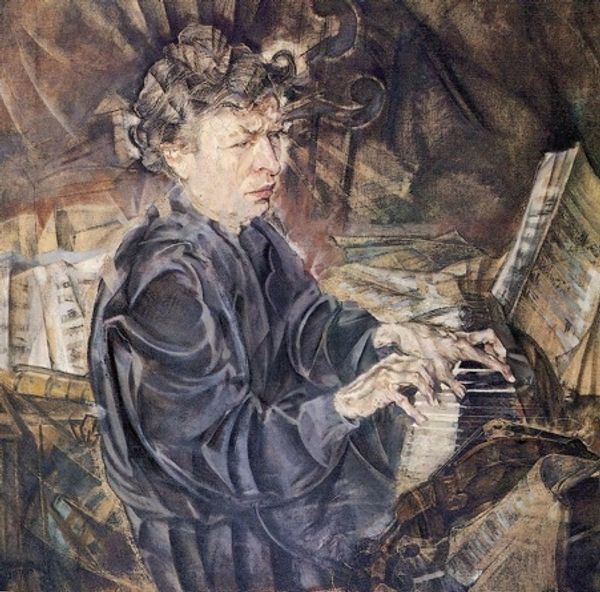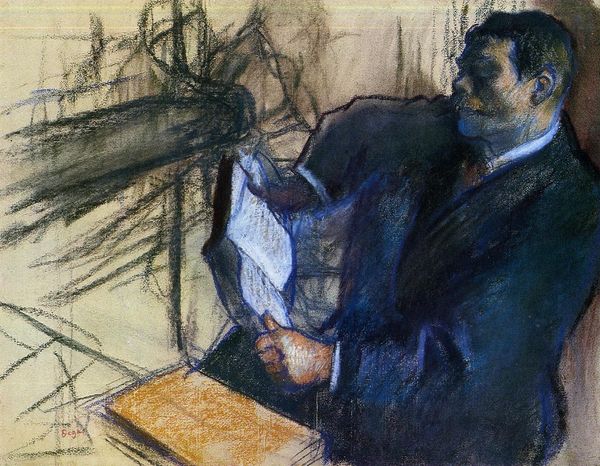
Mademoiselle Dihau at the Piano 1890
0:00
0:00
henridetoulouselautrec
Musee Toulouse-Lautrec, Albi, France
painting, oil-paint
#
portrait
#
painting
#
impressionism
#
oil-paint
#
oil painting
#
genre-painting
Dimensions: 63 x 48 cm
Copyright: Public domain
Editor: So, here we have "Mademoiselle Dihau at the Piano," painted by Henri de Toulouse-Lautrec around 1890. It's an oil painting, and there's a certain quiet intensity to it; a woman absorbed in her music. What stands out to you in this piece? Curator: It's a wonderful image that embodies many layers of cultural memory. First, consider the piano itself. For centuries, it symbolized domesticity and refined taste, often representing the epitome of bourgeois aspirations. Do you see any contradictions or perhaps, challenges, to this idealized symbol? Editor: Well, she doesn’t exactly look like she is performing for guests or seeking their approval; she seems rather… private. Curator: Precisely. Look at the color palette. Lautrec uses darker, muted tones which deviates from traditional bright salon painting. There's an element of introspective symbolism at play here. Observe her intense focus. Is it purely musical, or do you detect other psychological components suggested through her concentration? Editor: It’s like the music has completely drawn her in, setting the world outside her perception. Perhaps, even blocking any of her inner anxieties as a young performer? Curator: Exactly! The sheet music becomes almost like a protective shield. And that relates directly to our understanding of the late 19th-century social constraints placed on women in public spaces. It would be intriguing to contemplate if music was, for Dihau and others of her gender, an accepted zone for creative expression and release. What are your feelings toward her profile pose here? Editor: The profile kind of masks her emotions. She appears serene, perhaps stoic. It invites us to project our interpretations of the scene. I find myself appreciating the psychological complexity within what seems, at first glance, like a genre painting. Curator: Indeed! It’s in the interplay of these social symbols that this picture becomes particularly profound. Hopefully, this deeper examination of both cultural and visual information adds resonance to your experience of viewing it.
Comments
No comments
Be the first to comment and join the conversation on the ultimate creative platform.
